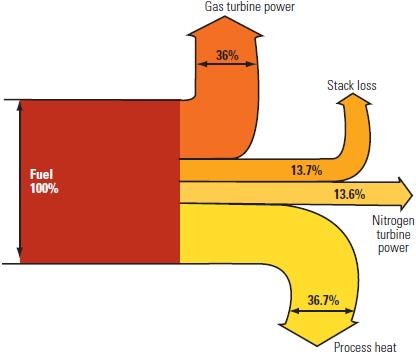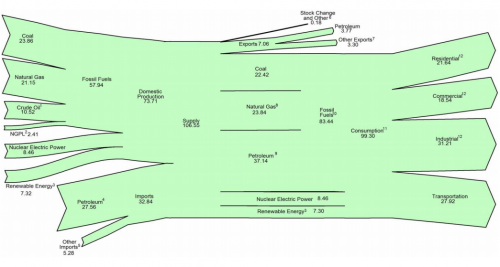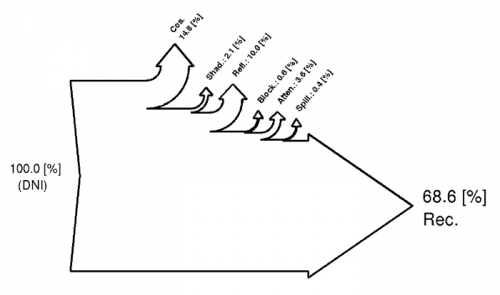This post on the Power Industry News blog features a Sankey diagram “for a dual Brayton cycle regasifier plant [that] shows how the fuel is consumed”. The article describes possibilities of improving the energy efficiency of the liquefied natural gas (LNG) reevaporation process.
I quite liked the Sankey diagram for its simplicity, being to scale and color coding. The fact that the arrows for “process heat” and “stack loss” branch out in a slightly curvy way larger than 90° is uncommon, but hey, it gives the whole thing a special touch.










